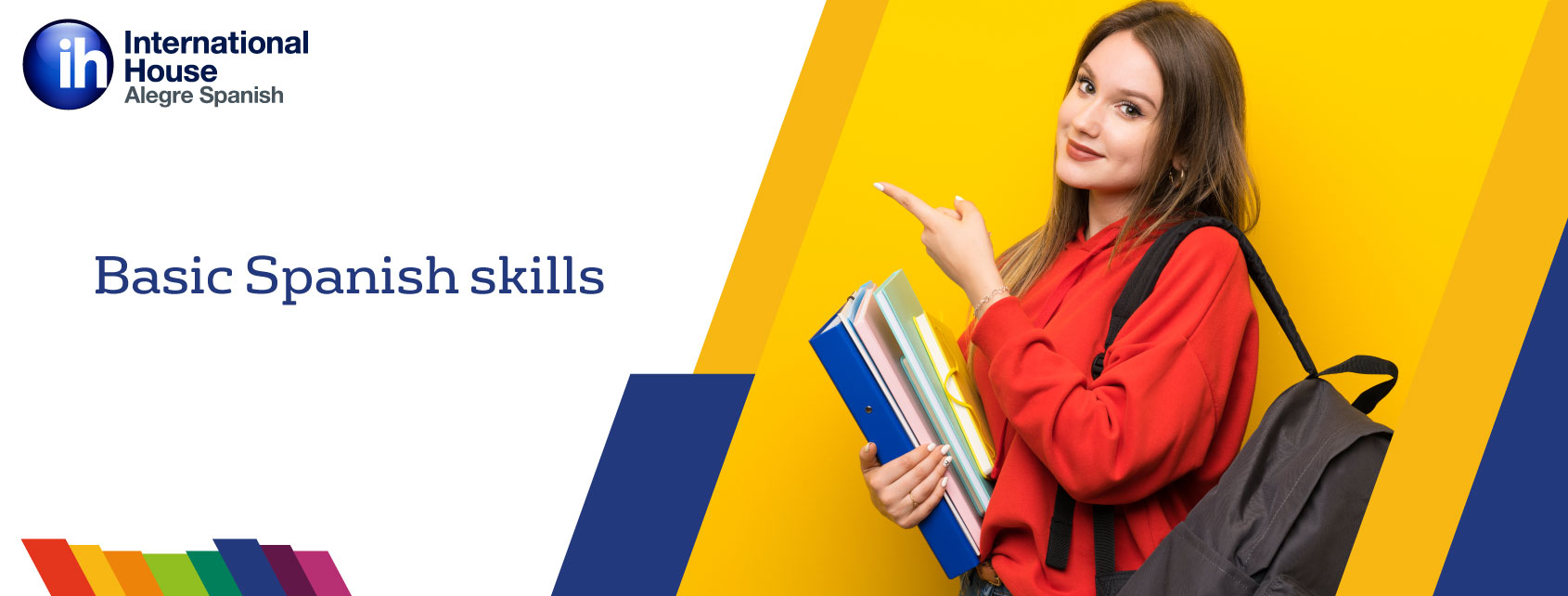The Spanish levels are determined with the same nomenclature as the CEFR English levels and we explain what each one consists of.
Spanish levels are determined by: A1, A2, B1, B2, C1 and C2. In the following guide we will explain the knowledge and skills that a student acquires in the Spanish courses to reach each one of them.
Beginner Spanish Level A1
This is where you should start! A1 is the basic level and where you begin to develop your communication skills in the language with basic vocabulary. After taking Spanish classes and reaching this level, it is unlikely that you will be able to easily engage in a dialogue with a native speaker, but you will be able to:
- Introduce yourself and give a brief description of yourself
- Mention simple phrases in Spanish
- Ask for directions and follow directions
- Distinguish words and phrases in a Spanish conversation
- Read children’s books
A one is the level that will help you on a tourist trip so you can take Spanish courses in Mexico City, Oaxaca or Riviera Maya to continue your preparation. This level becomes the starting point to reach the rest of the language levels.
Beginner Spanish Level A2
This is the next step after the A1 Spanish level where you will increase your vocabulary to maintain a conversation. As we mentioned, this level will allow you to travel to a Spanish speaking country like Mexico, so you can choose from our Spanish Schools in Mexico.
The knowledge and skills developed up to this level of Spanish will allow you to perform the following activities:
- Listen to podcasts in Spanish on the topics of travel, shopping, communicating with friends, visiting medical institutions.
- Use different forms of the tense both during a conversation with the interlocutor and when writing letters.
- Read a simple advertisement in the newspaper, understand what is written on a restaurant menu, navigate timetables at public transport stops.
Intermediate B1 Spanish level
The initial Spanish levels that gave you the basic knowledge of the language are just the beginning. Study Spanish in Mexico City or at any of Alegre’s Spanish Schools will allow you to learn the language and experience it through real conversations, so you will be able to:
- Speak Spanish more relaxed with native speakers.
- Read simple books in Spanish
- Express your point of view, supported by some facts
- Listen and understand complete sentences
Intermediate B2 level of Spanish
Many people who have successfully mastered B2 easily find a job abroad as a manager, sales consultant, courier, cab worker. Not only can you continue taking Spanish courses in Oaxaca, you could also get a part-time job. Also, taking classes at our Spanish school Cancun will allow you to get a job where both English and Spanish language skills are required because it is a worldwide tourist spot.
Students who have completed the intermediate B2 level of Spanish will be able to do the following activities.
- Communicate easily with Spanish speakers without a dictionary.
- Defend your point of view in a discussion or dialogue.
- Formulate clear monologues where you argue your personal position.
- Talk about feelings and principles watch movies in the original language read books easily
Advanced Spanish Level C1 and C2
These are the levels of professional Spanish, so after taking Spanish courses you will have to take an exam to get a certification in our Spanish school in Oaxaca, Mexico City or Riviera Maya.
Some universities in Mexico require a Spanish certification for foreign students with an advanced level of Spanish C1 or C2 for masters or doctorate degrees, so at these levels of Spanish you will have the ability to:
- Participate in conferences and speeches
- Possess highly specialized vocabulary
- Can communicate reasonably well in a professional environment
After taking courses at our Spanish Schools in Mexico, a person even speaks like a native Spanish speaker. In conclusion, by achieving levels C1 and C2 you can successfully pass the international Spanish tests and move abroad to study, work or reside permanently.








